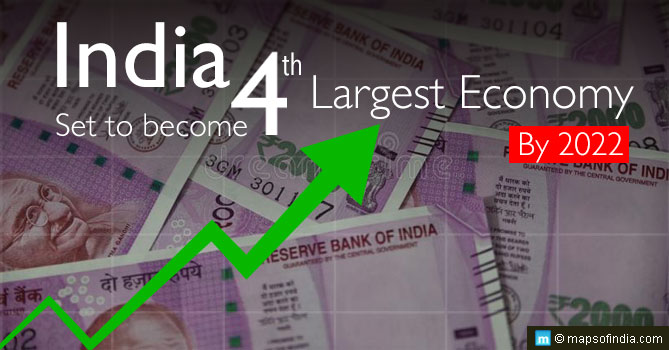
Indian economy has come a long way in the last 7 decades since gaining independence on August 15, 1947. When the colonial rule came to an end after 200 years of subjugation and extraction of India’s natural resources, it left Indian economy in ruins, with nearly half of the population living under the poverty, frequent famines, and outdated industries not able to fulfil the demands of the population. However, Indian overcame all the obstacles that were in the path of becoming one of the largest economies in the world. In April 2018, according to the database of the World Economic Outlook (WEO) of International Monetary Fund (IMF), India displaced France as the 6th largest economy in the world with a Gross Domestic Product (GDP) of $2.6 trillion in the 2017-18 fiscal year. According to the estimates of IMF, India is set to overtake its colonial rulers United Kingdom as well the German economy to become the fourth largest economy in the world by 2022.
NEP and India’s recovering economy
Indian economy was reeling under distress during the late 1980s, with an unstable political period that had also affected the growth and prosperity of the country’s economy. With fast exhausting gold reserves, trade balance deficit, current account deficit, depreciation in exchange rate, the country was on the brink of defaulting on its financial obligations and many other domestic and international factors that forced India to seek help from the IMF. The global financial organisation agreed to grant loan to the then Chandra Shekhar government on certain conditions that included the airlifting of India’s gold reserves and introduction of tax and trade reforms. The whole situation led to the downfall of Prime Minister Chandra Shekhar’s government.
In July 1991, P V Narsimha Rao took charge of the government and thus prompted the introduction of New Economic Policies, that not only brought in the much needed tax reforms but also initiated the liberalisation, privatisation and globalisation of the Indian economy. The reforms led to reduction of import tariffs, reduction of taxes, deregulation of markets, led to inflow of greater foreign investments that not only brought the country of its economic crisis but also put India on the path of becoming one of the fastest developing economies in the world.
The Recent Reforms
The end of the first decade of the new millennium saw the UPA government facing several corruption charges and the government was fast losing its popularity. It was this popularity that propelled them to successive electoral successes in 2004 and 2009 General elections. Foreign investors were growing fearful and frustrated due to the lack of reforms and policy paralysis, as major reforms were not able to pass the floor of the Parliament due to lack of consensus among the UPA allies and opposition parties.
In 2014, Bharatiya Janata Party under the leadership of Narendra Modi won a historic mandate in the 2014 General elections, by winning a comfortable majority on its own and doing so after nearly 30 years. Since then, the Modi government has brought in several reforms such as Jan Dhana Yojana for financial inclusion, demonetisation of 1000 and 500 currency notes to reduce the fake currencies in the market and black money, and several other such reforms that has improved the ease of doing business not only for the domestic but also for foreign investors. In July 2017, Prime Minister Narendra Modi introduced the biggest tax reform in India by implementing Goods and Services Tax (GST).
Initially, the economists in India and from around the world were skeptical about the impact demonetisation and GST may have on the Indian economy with some of the major credit rating agencies downgrading India’s projected growth. However, with the time, confidence of investors and credit rating agencies on India economy is back as is highlighted in IMF’s World Economic Outlook, which predicts India to overtake the United Kingdom as the fifth largest economy by the end of 2018, while by 2022 India will become the fourth largest economy in terms of GDP measured at purchasing power parity (PPP).





